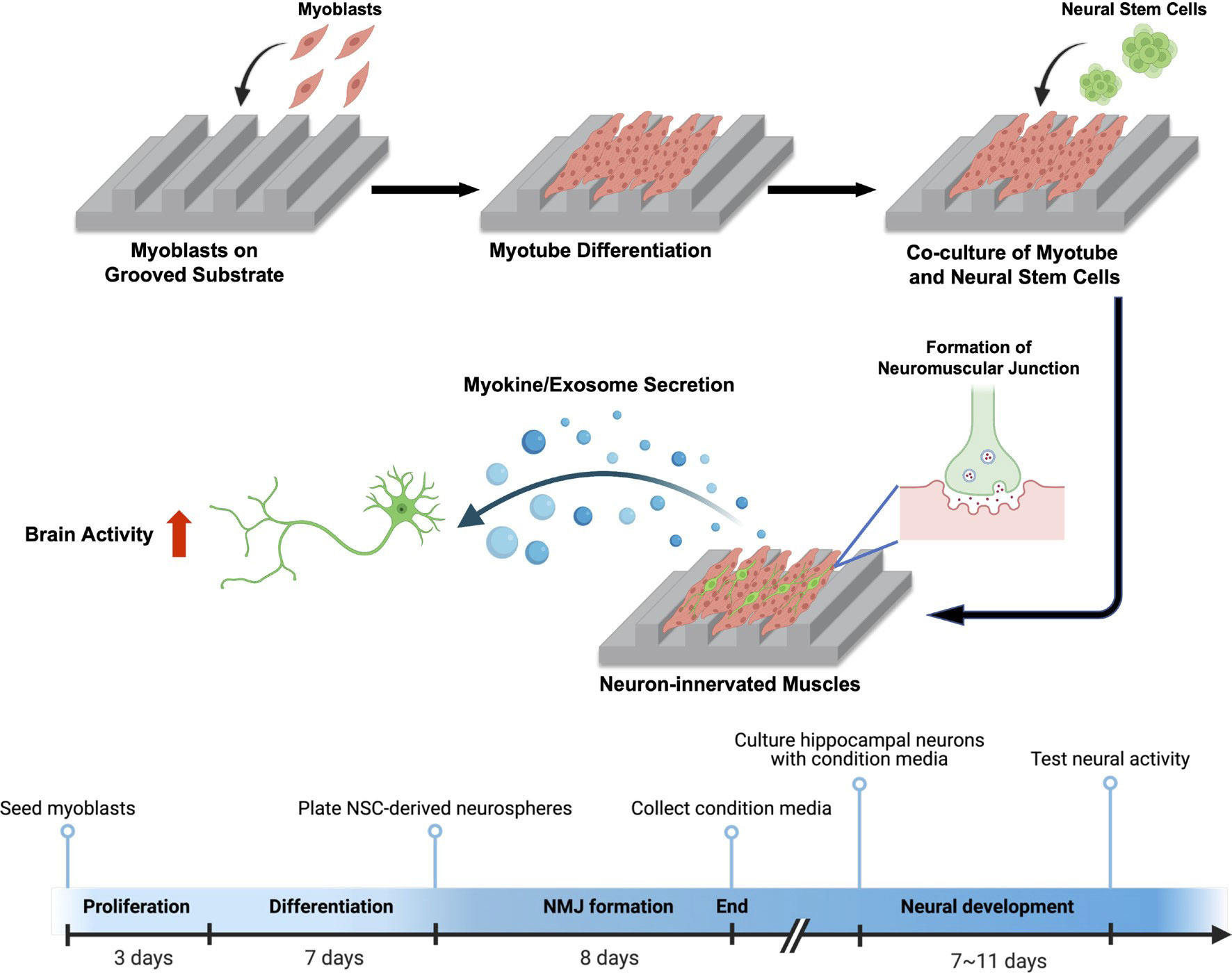

 Skip to navigation
Skip to navigation
Site Primary Navigation:
- About SDSC
- Services
- Support
- Research & Development
- Education & Training
- News & Events
Search The Site:

Published September 10, 2024

Schematic of creating a neuron-innervated muscle model using a grooved pattern substrate and subsequent analysis of muscle secretory activity. Credit: BioRender.com
By Kimberly Mann Bruch, SDSC Communications
University of Illinois Urbana-Champaign researchers recently used the Expanse supercomputer at the San Diego Supercomputer Center (SDSC) at UC San Diego and the Bridges-2 supercomputer at the Pittsburgh Supercomputing Center, a joint center of the University of Pittsburgh and Carnegie Mellon University, to showcase how muscle cells can produce biological molecules that play a role in enhancing the activity of nerve cells – particularly when certain neurons are properly connected and stimulated.
With allocations on the supercomputers provided by the U.S. National Science Foundation’s (NSF) ACCESS program, Mattia Gazzola and Hyunjoon Kong ran their calculations on Expanse and Bridges-2, and published the details of their study in the Proceedings of the National Academies of Science (PNAS).
“Exercise is known to improve our brain function and one major reason is due to the skeletal muscle’s capability to secrete specific biologic factors that benefit neuron development during contraction,” said Kong, who is the Robert W Schafer Professor in the Department of Chemical and Biomolecular Engineering at the University of Illinois. “Inspired by this concept, we used ACCESS allocations on Expanse and Bridges-2 to develop an in-vitro model with motor neuron-innervating muscles that produce the muscle-derived biological factors and collect these factors to facilitate the neural network formation in our bio-computing system to achieve better computing performance.”
Kong said that the team looked at two specific biological molecules – myokines and exosomes – that are released by muscle cells. While myokines are proteins that can influence other cells’ functions, exosomes are small vesicles that transport molecules between cells. These muscle-derived factors can improve how neurons function, which is critical for processes like communication between neurons or overall brain function.
“Our work is analogous to the benefits of physical exercise as proper movement allows skeletal muscles in the human body to secrete molecules that boost brain function – including improved memory,” Kong said. “We utilized these ideas to make a biological platform to produce myokines and exosomes outside of the human body and then applied this to a neuron-based computing system to enhance the biocomputational performance and efficiency.”
In other words, Kong and Gazzola have improved a computing system that relies on biological components (living neurons) by leveraging the beneficial effects of molecules produced by muscle cells. This could lead to advancements in creating biological computers that use natural processes for computing tasks.
Video Credit: University of Illinois Urbana-Champaign
“Thanks to our ACCESS allocations on Bridges-2 and Expanse, we have successfully implemented biological components into computational systems that mimic or leverage natural processes for advanced computing,” said Gazzola, the Charles Conrad Kritzer Associate Professor of Mechanical Science and Engineering at the University of Illinois. “One surprising aspect of our work is that stronger muscle contractions – triggered by neural signals – secret a greater number of exosomes, which contain a more diverse array of mRNAs and proteins that are associated with neurons or brain system development.”
The team found that by dosing these exosomes to cultured neurons, they are able to potentially enhance the learning capability of the neurons system so that it could become a smarter computer.
The computational work for this study was supported by the U.S. National Science Foundation ACCESS (grant no. BIO240096).
Share